What To Know About The King Charles And Queen Camilla's Coronation Crowns
These historic crowns have a symbolic role in coronations—but they're not without their controversy.
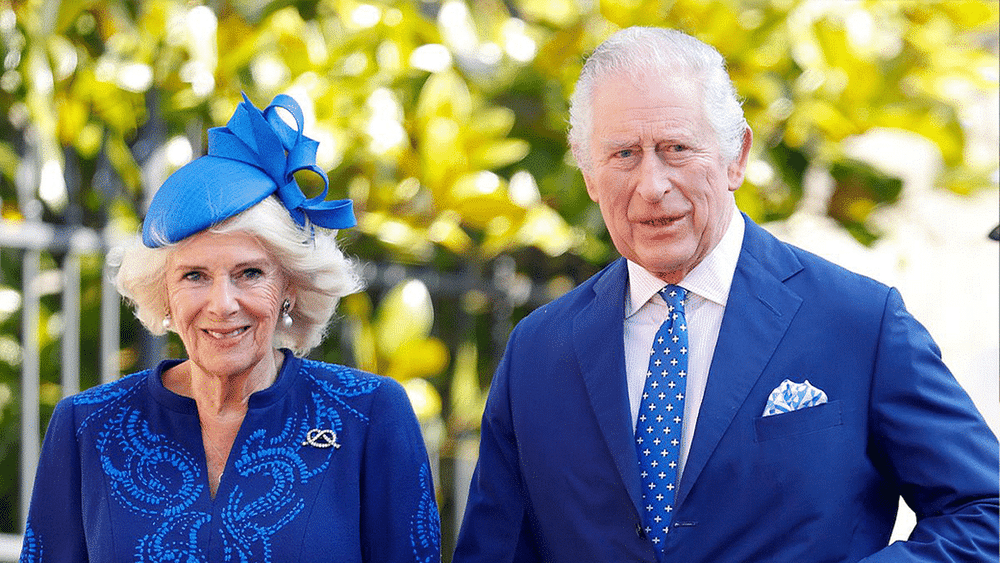
Next month, King Charles III will be crowned as the United Kingdom's new monarch in the first British coronation to take place in 70 years—but which crowns exactly will he be wearing?
For hundreds of years, the Crown Jewels, or the collection of the nation's most sacred and ancient treasures held in trust by the monarch, have played a key role in the coronations of new sovereigns.
To mark the start of the king's reign, both King Charles and his wife, Camilla, the queen consort, will don crowns pulled from the Tower of London, where they have been guarded since the 17th century. Charles will wear St Edward's Crown and the Imperial State Crown, while Camila will wear Queen Mary's Crown.
The crowns also contain controversial gemstones—specifically the Cullinan II, III, IV, and V—something which has prompted global conversations about the royal family's historical legacy in maintaining imperialism and colonisation.
Read ahead for everything you need to know about these symbolic headpieces.
Related article: Buckingham Palace Announces Details On King Charles III’s Pared-Down Coronation Ceremony
What King Charles Will Wear
St Edward's Crown
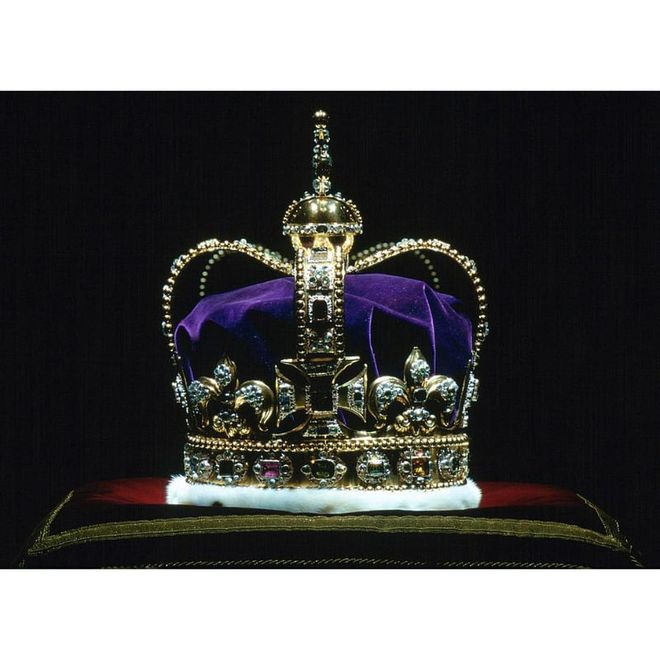
St Edward’s Crown. (Photo: Getty Images)
St Edward’s Crown
King Charles III will be crowned with St Edward's Crown, which has traditionally been used as the coronation crown since the 17th century (Queen Elizabeth II was crowned with this very headpiece during her 1953 coronation).
The headpiece was made for King Charles II in 1661 and was intended as a replacement for the original medieval crown, which was melted in 1649. The Royal Collection Trust notes that the original is thought to be dated back to the eleventh-century royal saint, Edward the Confessor, who was the last Anglo-Saxon king of England.
St Edward's Crown was commissioned from the crown jeweler, Robert Vyner, in 1661. Vyner did not perfectly replicate the original headpiece, though he imitated the original design by including four crosses-pattée, four fleurs-de-lis, and two arches. The crown additionally includes a deep purple velvet cap, an ermine band, an orb and cross topper, a solid gold frame, and plenty of gems such as rubies, amethysts, sapphires, garnet, topazes, and tourmalines.
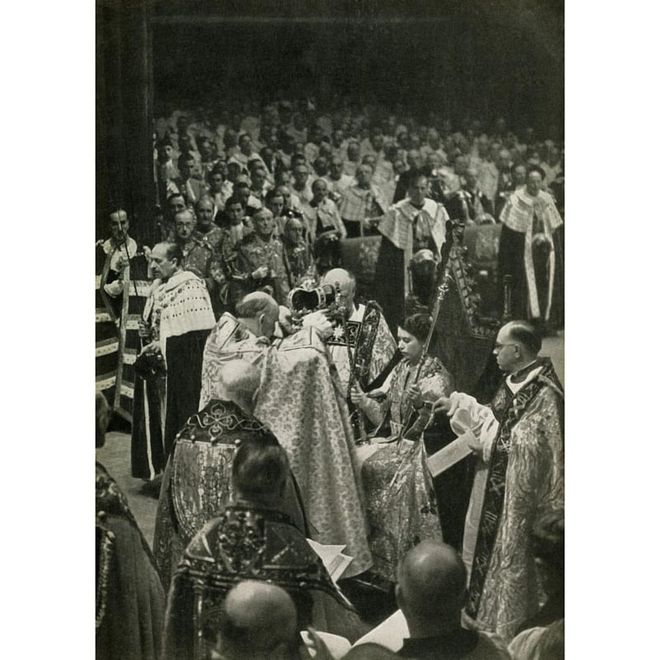
Queen Elizabeth II about to receive St Edward’s Crown during her 1953 coronation. (Photo: Getty Images)
Queen Elizabeth II about to receive St Edward’s Crown during her 1953 coronation.
The Imperial State Crown

The Imperial State Crown. (Photo: Getty Images)
The Imperial State Crown
After the coronation service, the king will exchange St Edward's Crown for the Imperial State Crown, which he will likely wear during the Coronation Procession and while waving to members of the public on the Buckingham Palace balcony. This headpiece is often used during ceremonial occasions, like the State Opening of Parliament. It was last seen placed atop Queen Elizabeth's coffin during her funeral last September.
The crown was made for King George VI's coronation in 1937, but is based on Queen Victoria's 1838 crown.
The design includes an openwork gold frame mounted with three large stones and set with 2,868 diamonds in silver mounts as well as 17 sapphires, 11 emeralds, and 269 pearls in gold mounts. It also features a fitted purple velvet cap and an ermine band.
Related article: The Royals Got Emotional At The Funeral For Queen Elizabeth II
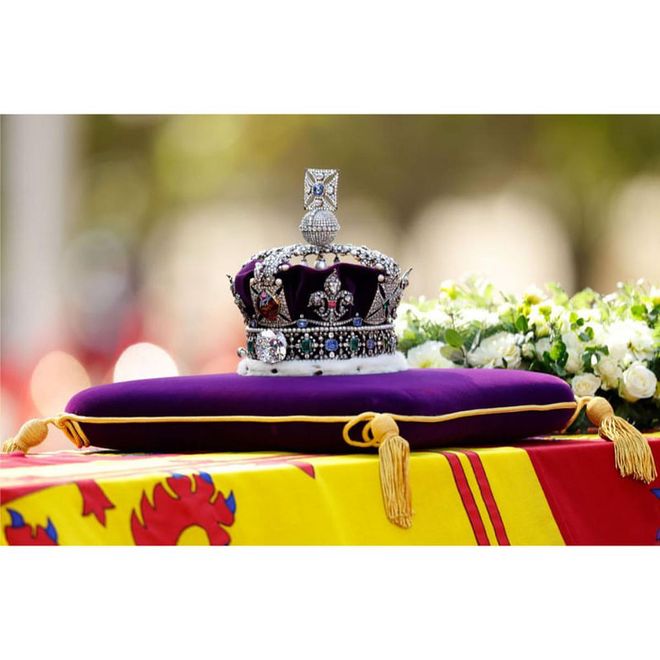
The Imperial State Crown laid on the coffin of Elizabeth II. (Photo: Getty Images)
The Imperial State Crown laid on the coffin of Elizabeth II.
Several of the gemstones in the Imperial State Crown bear historical significance:
- St Edward's Sapphire is said to have been worn by St Edward and was allegedly excavated from his tomb in the 11th century.
- Four large pear-shaped pearls included in the crown are thought to have once been owned by Queen Elizabeth I. Elizabeth took the pearls from her cousin, Mary, Queen of Scots, whom she imprisoned and who was gifted the pearls from her mother-in-law, Catherine de Medici.
- The Black Prince's Ruby is thought to have been the stone given to Prince Edward, also known as the Black Prince, by Don Pedro, King of Castile, following the 1367 Battle of Najera, though it is difficult for historians to prove that it is indeed the same stone.
- The Stuart Sapphire was allegedly smuggled by King James II when he fled England following the Glorious Revolution in 1688. He later gave it to his son, Prince James Francis Edward, who then passed it to his son, Henry Benedict, Cardinal York. Henry is said to have later sold the sapphire to King George IV, and thus returned the stone to the British royal family's collection.
- Cullinan II, also known as the Second Star of Africa, is the second-largest stone cut from the Cullinan Diamond, the largest rough diamond ever found. The diamond was mined in South Africa in 1905, and subsequently forced over to the British royal family. In the decades since, the Cullinan II and its sister stones have sparked calls for the royal family to return the diamonds to South Africa as more and more people criticize their role in plundering colonized lands.
What Queen Camilla Will Wear
Queen Mary's Crown
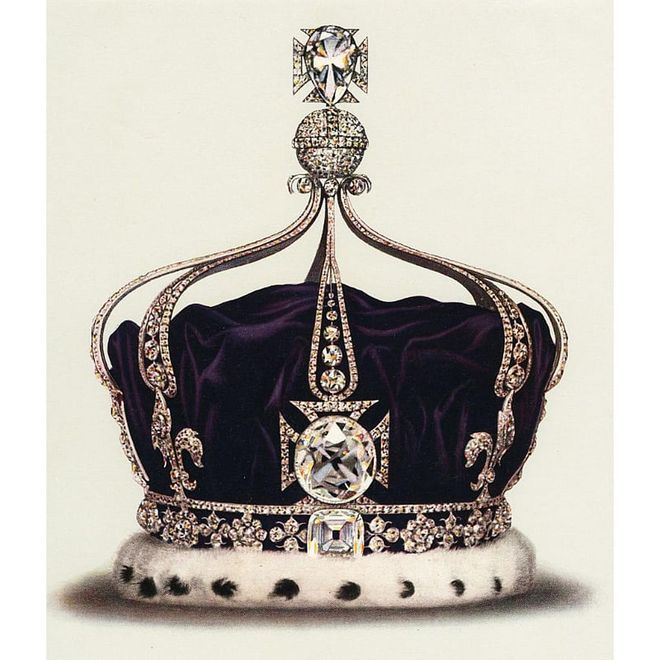
Queen Mary’s crown. (Photo: Getty Images)
Queen Mary’s crown
Camilla will be crowned with Queen Mary's Crown. In the interest of sustainability, it is the first time in recent history that an existing crown will be reused for the coronation of the consort rather than having a new crown made, according to Buckingham Palace.
Ahead of the coronation, the crown will be reset without the contentious Kohinoor diamond—whose origin is disputed, but has nonetheless come to symbolize the British royal family's violent colonial rule over India—and replaced with the Cullinan III, IV, and V diamonds, a choice made to pay tribute to the late Queen Elizabeth II, as these diamonds hailed from her personal jewelry collection. Still, the swap has incited criticism from many historians and activists, who have noted that the Cullinan diamonds were mined from South Africa and are therefore still relics of British imperialism.
The crown was originally made for the 1911 coronation of Queen Mary, the consort of King George V. The design, inspired by Queen Alexandra's Crown, features a silver frame lined with gold and set with 2,200 diamonds, as well as a fitted purple velvet cap and ermine band. It can be worn without the arches in form of a circlet.

Queen Mary wears the crown as a circlet at the 1937 coronation of her son, King George VI. (Photo: Getty Images)
Queen Mary wears the crown as a circlet at the 1937 coronation of her son, King George VI.
Why are the Cullinan diamonds so controversial?
To many, the Cullinan diamonds represent the British royal family and government's active participation in the colonisation of nearly an entire continent and the subsequent exploitation of its peoples. During that period, while the British empire became bloated with riches, the people from the lands those riches hailed from were often left destitute.
"The Cullinan Diamond must be returned to South Africa with immediate effect," activist Thanduxolo Sabelo said after the death of Queen Elizabeth II. "The minerals of our country and other countries continue to benefit Britain at the expense of our people. We remain in deep, shameful poverty, we remain with mass unemployment and rising levels of crime due to the oppression and devastation caused by her and her forefathers."
Using the Cullinan Diamonds as a replacement of the Kohinoor diamond may only further calls for reparations. Danielle Kinsey, an expert in British imperialism and and colonialism, previously told NBC News, "If the Kohinoor is a symbol of East India Company plunder imperialism in India, the Cullinan is a symbol of a different kind of British racialised settler colonialism in southern Africa—and the royal family and their literal crowns and regalia are one place where these two strains of imperialism come together."
This article originally appeared in Harper's BAZAAR US.